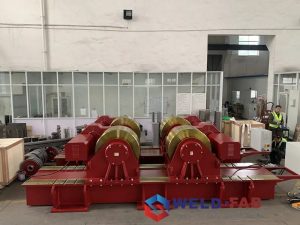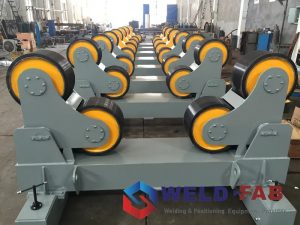The welding rotator used in Boiler production
The boiler is a kind of energy conversion equipment. The energy input to the boiler is chemical energy and electric energy in the fuel, and the boiler outputs steam, high temperature water or organic heat carrier with certain thermal energy. Boiler includes two parts: pot and furnace. The original meaning of pot refers to a water container heated on a fire, and a furnace refers to a place where fuel is burned.
Before we start to understand all the uses of boilers, let us first define what a boiler is and how it works.

A Boiler is a closed vessel in which water or other suitable liquid is heated to generate steam or vapour.The steam/vapour is then exited and is used for various purposes like heating applications (water heating, central heating), boiler based power generation or even for cooking and other purposes which could be domestic or industrial.
It basically follows the concept of a pressure cooker but in a bigger way. The boiler concept is used across places from domestic purposes to industrial activities. The fluid is generally incorporated into a system and it works to provide steam through connecting combustion products and the water.

The hot water or steam produced in the boiler can directly provide the required heat energy for industrial production and people’s lives, and can also be converted into mechanical energy by a steam power device, or converted into electrical energy by a generator. Boilers that provide hot water are called hot water boilers, which are mainly used in daily life, but there are also a few applications in industrial production. The boiler that produces steam is called a steam boiler, often abbreviated as a boiler, and is mostly used in thermal power stations, ships, locomotives, and industrial and mining enterprises.
According to its use, there are many types of boilers. Although household boilers are small in size and used for daily housework, today’s industrial boilers play a huge role in the production process.
The main users of boilers are in the following areas: Food Industry, Canning, Bottling, Pre-cooked Food, Oil, Slaughter Houses, Spirits, Breweries, Dairy Products, Wineries, Livestock Feed, Rubber Industry, Waste And Recycling Monetization, Plastics, Laundry, Pharmacy, Biofuel Production, Chemistry, Paper And Cardboard, Metal Industry, Construction, Concrete Prefabrication, Ceramics, etc.
The working method of the boiler is not as complicated as people think. It is a combination of basic science and the latest innovation. Different parts of the system are placed at different points.
The heat source and the water container are placed in different compartments. The metal rod connected to the water container, and then the heat helps to generate steam. The steam is then collected in a dome to condense it before releasing it from the boiler. This will increase the pressure and the energy generated will help power your production process.
Usually for safety purposes, boilers are equipped with safety valves to ensure that there are zero accidents due to pressure increases. According to the purpose of use, there are different types of boilers.
The type of boiler depends on your production requirements. Different types of boilers have different purposes. The classification is based on the amount of pressure it can generate, its ability to hold fuel and water, and the type of fuel that will be used. Can be divided into Fire Tube Boiler, Water Tube Boiler, Electric Boiler Condensing Boiler, Oil Boiler, Natural Gas Boiler

The material of the boiler is mainly steel plate. The final version of the thickness and shape of each boiler part is prepared in the programming department of the production line and the machine. The main goal when designing a boiler is to extract as much energy as possible from the fuel. To this end, both fixed carbon and volatile substances must be completely burned. Since one part is solid and the other part is gas, this task is not easy. The boiler must be at a very high temperature, close to 500oC, and must continuously burn fuel at a constant rate. Another factor in optimizing the design is to obtain the best heat transfer from the fuel to the water and steam. Boilers usually have several separate heat exchangers to do this.
The last important design consideration is to minimize the undesirable by-products that pollute the environment in the form of ash and flue gas.
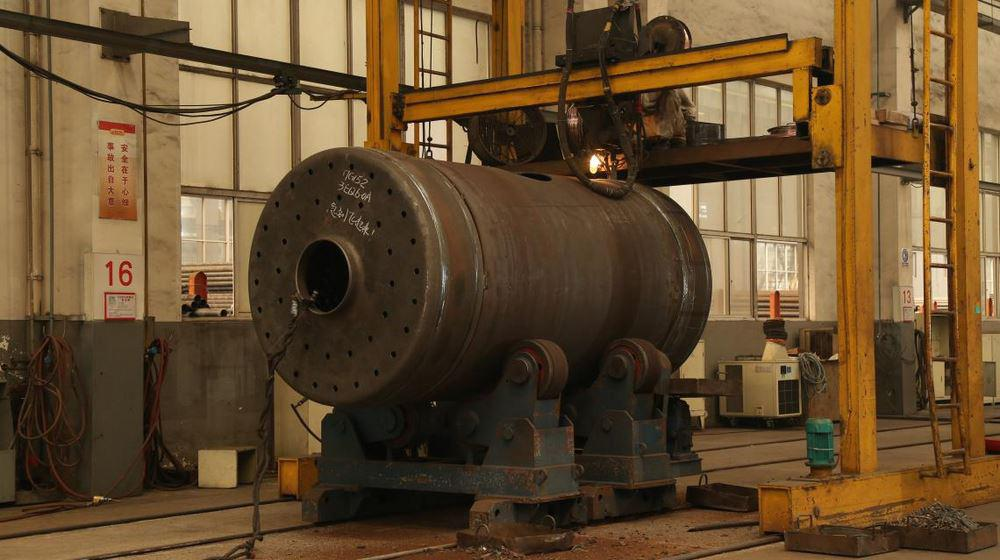
The first production process of the boiler started with the cutting of metal sheets of the required thickness. For material separation, a punching center can be used. The equipment of the stamping center has automatic loading and unloading, as well as the unloading and sorting of parts. Laser cutting materials can also be used. Burn the material on lasers with powers of 30 kW and 20 kW. The advantage of laser material segmentation lies in the high precision of the firing part of the product.
After cutting the material with a cutting machine, the second production process is material bending. The steel plate is bent into a cylinder with a suitable diameter with a bending machine, and then the cylinder is polished, and circular seams and straight seams are welded. There are professional bending machines designed for manual sheet metal bending of small and medium boiler parts. Due to the design and compact size, the machine can be accurate, fast and efficient. The machine is equipped with 6 shaft stops, which provides great possibilities for bending non-standard parts (such as oblique bending). The bending measurement is performed using a non-contact laser measurement system. This process ensures maximum accuracy and minimum deviation. It provides the highest efficiency and a wide range of applications in precision sheet metal bending.
The third production process is the welding of the boiler heat exchanger and other components. When welding the boiler heat exchanger, due to the large diameter and heavy weight of the drum, it can be used in conjunction with the welding rotor for the convenience of workers. The welding rotor drives the cylinder to rotate with the friction of the rollers to complete the welding of the circumferential seam. Only the manual control box is needed to adjust the speed to make the roller reach the required speed, and drive the cylinder to rotate at a uniform speed, which is convenient for welding operation. The inconvenience of manually rotating the cylinder is greatly reduced, and the operation is simple. It is the best choice for auxiliary welding of large cylinders.
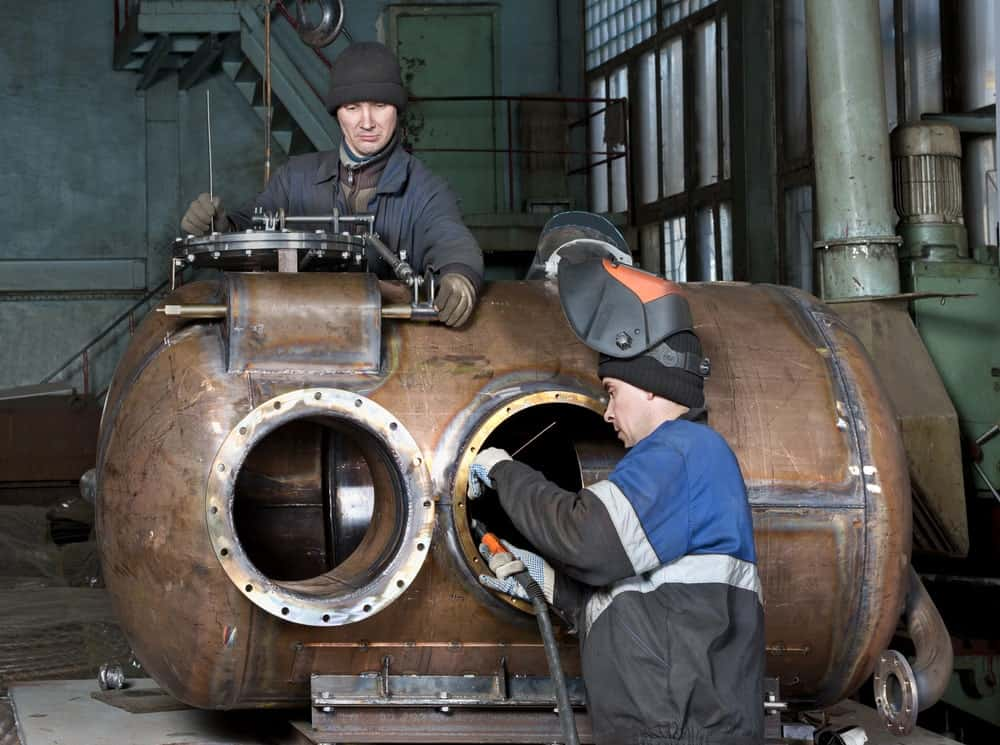
Weld-Fab needs to go through a series of strict checks from the design to the completion of the welding rotator. At the beginning of the design, first determine the welding rotator proposal, the layout plan of the drive mechanism and the transmission of all levels. If a ring flipper is used, the flip ring structure needs to be determined. Then determine the driving torque, motor power, and continue to design the mechanical parts. Once the design plan of the welding rotator is determined, it will be put into production.
Cutting, welding, polishing of the board, and then painting. After assembling the motor, reducer and other parts, the equipment can be packaged and transported only after the commissioning and operation are normal.
The high efficiency and convenience brought by the welding rotator in production have caused many well-known boiler manufacturing companies to use the welding rotator to assist daily production operations. For example, Powerhouse Boiler Equipment; Hurst Boiler & Welding Company, Inc; Superior Boiler; MAPNA Group; Rentech boilers, etc.
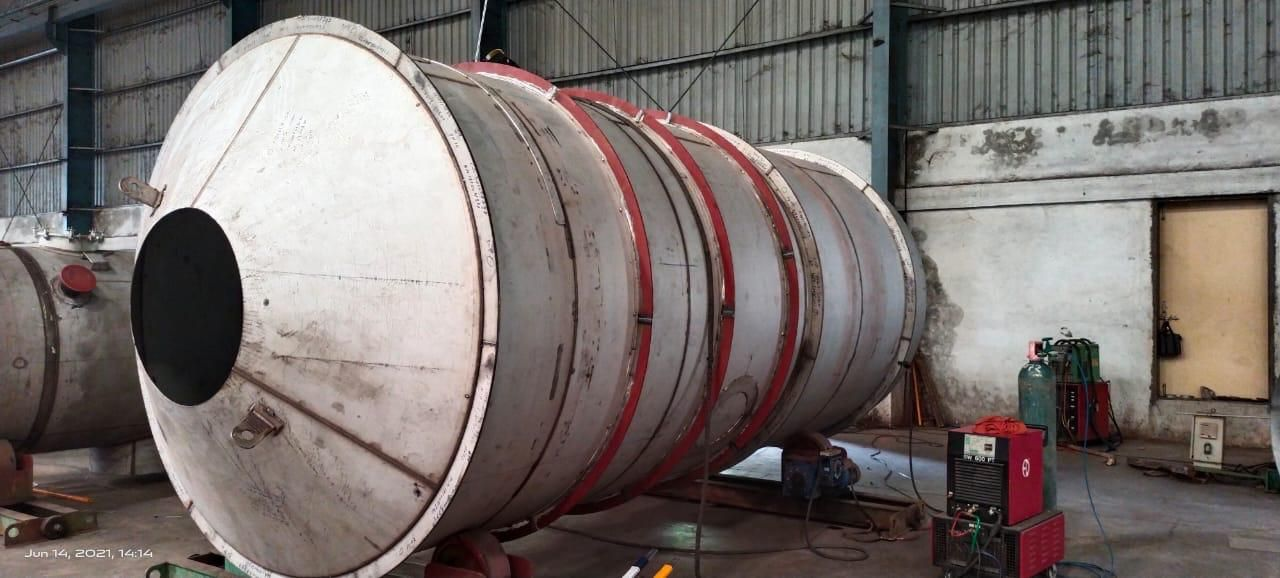
When using the conventional welding rotator, in terms of size, it can be adjusted with strong adaptability. The distance between the rollers can be adjusted automatically through the reserved holes with screw adjustment or screw adjustment to match the size of the cylindrical workpiece. In the past, due to the limitation of production and processing technology, larger welding rotators were often needed to process some non-standard workpieces or materials with larger specifications. Nowadays, with the continuous improvement and development of technology, the conventional welding rotator is more in line with the needs of the market-oriented public. Analyzing and considering from the perspective of use, it has received everyone’s attention and praise, and it has become the standard used and selected by many domains in recent years.

